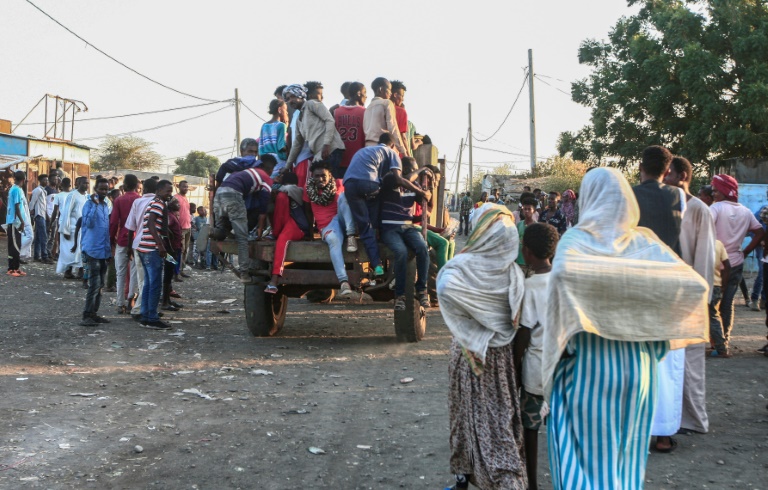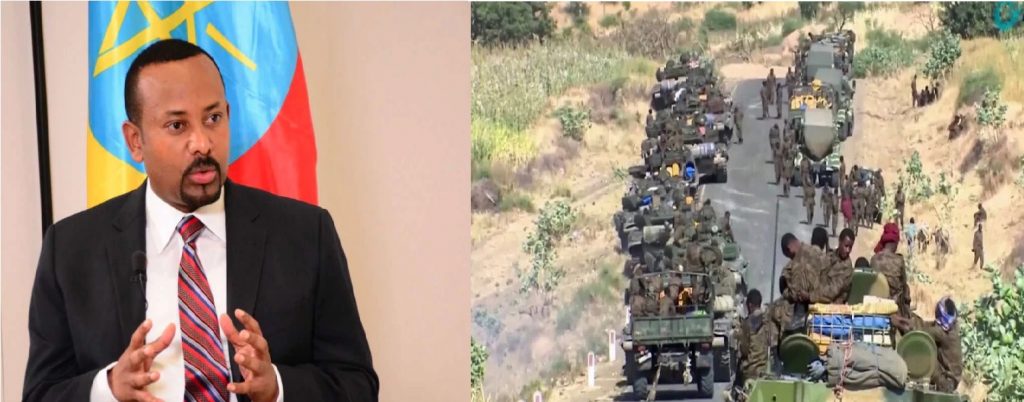
The UN Refugee Agency reports that over 30,000 Ethiopians have fled ongoing fighting in the Tigray region for safety in Sudan. The humanitarian crisis was brought about by the Violence between Central Government forces and local armies in northern Ethiopia’s Tigray region.
Violence between Central Government forces and local armies in northern Ethiopia’s Tigray region has driven more than 27,000 Ethiopians to flee into neighboring Sudan in the past one week. Women, men and children have been crossing the border at the rate of 4,000 per day since 10 November, rapidly overwhelming the humanitarian response capacity on the ground. The exodus has created yet another humanitarian crisis in Africa. More than half of those who have fled the violence are women and children. Many left with barely any belongings, and arrived exhausted from walking long distances over harsh terrain reports the UNHCR.
UNHCR has sounded alarm over the growing humanitarian crisis in the region, triggered by the still ongoing fighting between the Ethiopian federal government and Tigray forces that broke out in early November. The Ethiopian government has announced a six-month state of emergency in Tigray due to which those who are leaving the region are forced to live in squalid conditions with lack of electricity, telecommunications and minimal access to fresh food and cash.
The exodus has also triggered fear of the spread of COVID19. The UN and Aid agencies are running awareness campaigns on COVID-19 prevention have started with soap and 50,000 face masks sent from the capital, Khartoum, for distribution at entry points in Kassala and Gedaref. But the sheer numbers of new arrivals are hampering aid efforts.
UNHCR expects that the influx will continue to grow and is working on a contingency plan for 50,000 people. Since Saturday, 2,500 people have been relocated to Um Raquba settlement site, about 80 kilometres from the border and there is a critical need to identify more sites.
Across the border in northern Ethiopia, reports suggest that the number of civilians displaced by the conflict is growing by the day. But a lack of access, coupled with the inability to move supplies into the region, remain major impediments for aid organizations trying to reach those in need. UNHCR and its partners are on standby to provide assistance to the displaced, including basic items, when access and security allow.
The ongoing conflict is also raising concern for the Eritrean refugee population of nearly some 96,000 in Tigray, most living in camps and reliant on humanitarian assistance that has already been disrupted. One camp, Shimelba, is in close proximity to conflict, with UNHCR and partners currently unable to access the camp due to security concerns. Potential for further displacement inside the country is increasingly a real possibility.
What is happening in Ethiopia’s Tigray region?

On November 4, Ethiopian Prime Minister Abiy Ahmed announced he had ordered a military operation in Tigray, saying it came in response to a deadly attack on a federal army camp by the local ruling party. Phone, internet, banking and transportation services in the region have been shut down.
On November 17, PM Abiy Ahmed declared a “final and crucial” military offensive in the coming days to disarm and dislodge the Tigray People’s Liberation Front (TPLF) from the regional government of Tigray, in the country’s north. The announcement by the PM via a social media post came on the same day that the federal government’s three-day notice for the TPLF to surrender expired.
The central target of the military operation is the Tigray regional State capital, the city of Mekelle, where forces loyal to the TPLF attacked and seized control of the heavily armed Northern Command of Ethiopian National Defense Forces (ENDF) on November 4.
Areas in and around Mekelle were subjected to airstrikes by the Ethiopian air force on Monday, according to military and diplomatic sources cited by Reuters. TPLF’s head and the president of the Tigray’s regional government, Debretsion Gebremichael, has claimed that these attacks injured several civilians and killed at least two.
The federal government has refuted these claims. According to the task force appointed to oversee the operation to restore its authority in the region, these were “precision led and surgical air operations outside Mekelle city, based on information received of specific critical TPLF targets.”
Though news agencies have been unable to independently verify the contradictory claims because access to the Tigray region, as well as internet and telecommunication there has been cut off in most parts. The task force also claimed that the federal government’s troops had wrested control over the town of Alamata, around 180 kilometers from Mekelle. According to its statement, the TPLF’s troops have “fled, taking along around 10,000 prisoners.”
The federal government maintains that the atrocities committed by the Tigrayan forces, particularly on the people of non-Tigrayan ethnicity in the region, is an important factor behind the exodus.
In the town of Alamata with 50,000 residents and located on the south-eastern tip of Tigray, only around 9.5 kilometers away from the border with Amahara, whose regional government’s militias are supporting the federal troops against the Tigrayan forces. Calling on the UN and the African Union to condemn the attack, Tigrayan leaders accused the federal government of using hi-tech weaponry, including drones, to attack.
Amidst this escalating war and violence, more than 30,000 people are estimated to have fled from the Tigray region across the western border into Sudan, mostly into the States of Gedaref and Kassala leading to another humanitarian crisis in the continent. Along with the UN and the African Union, a number of other countries in the region are calling on the two parties to negotiate a peaceful settlement, fearing a broader regional destabilization as a result of this conflict.
